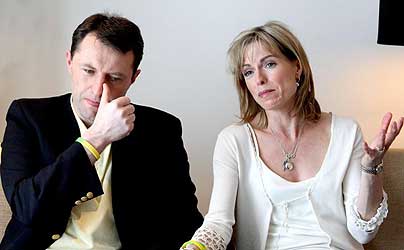|
'People speak without speaking. The face screams', says Armindo Freitas-Magalhaes,
director of the Laboratory for Facial Expression of Emotions (FEELab) at
Fernando Pessoa University. And it always screams the truth. Even when
one tries to hide, simulate or distort.
Because the muscles draw on the face (the stage) the emotions that are
generated in the brain (the dressing rooms) in a spontaneous and
involuntary way, the psychologist explains. And he states: 'Facial
expressions never lie'.
Paul Ekman, a famous North American psychologist who inspired the
television series 'Lie to me', has cartographed the expression of
emotions on the human face, based on muscle movements of the face, the
eyes, the nose, the mouth, the eyelids, the eyebrows, the forehead and
the neck. The result is the Facial Action Coding System (FACS), a
scientifically validated instrument ' contrary to the polygraph ' that
has many uses, including criminal investigation.
The Paul Ekman Group cooperates with the FBI, the CIA, the Scotland Yard
and other investigation agencies, just like in the television show,
which is fictional and exaggerated in some aspects, but with scientific
bases, asserts Freitas-Magalhaes, who is also a member of the
institution.
In Portugal, the study of facial expressions has never been applied in
police investigations and the fact that police interrogation is not
recorded on video renders its application more difficult. The FEELab's
director confirms the existence of ?non official approaches?, when
Madeleine
McCann disappeared, and he even came to analyze the parents?
expressions during public statements.
He concluded that when they stated that they had never given their
children sedatives, there was no congruence between the verbal language
(words) and the non verbal (facial expressions). Which indicates that
they lied. ?The way one says something is more important than what is
being said. Even blinking gives indications about what one is feeling?,
the psychologist stresses.
Every expression, every movement has a meaning. More than that: they are
universal. A Portuguese person's face reveals emotions such as
happiness, despise or surprise in the same way that a Chinese. In other
words, they use the same facial markers. What differs are the rules of
social exhibition, Freitas-Magalhaes explains, citing Elman's studies in
New Guinea, which demonstrated the universality of the facial expression
of emotions.
Simulations are obviously possible, and some people handle them well,
especially in situations where there is an emotional emptiness, but the
produced expressions do not comply with the criteria of truthfulness and
someone who has mastered the FACS is able to detect the lies. Always,
the investigator guarantees. One of the ways to find the falsehood of an
expression is to analyze the face's symmetry: in case of a simulation,
the left side's movements do not match the right side's movements.
in:
Jornal de Not?ias, 31.01.2011 |


